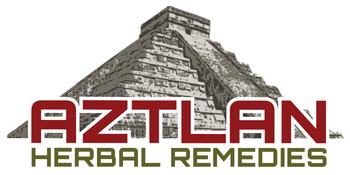Most people think all oregano is the same — but in reality, there are two very different herbs behind that familiar name.
Mexican oregano and Mediterranean oregano come from entirely separate plant families, each with its own chemistry, aroma, and healing properties. Understanding the difference helps cooks, herbalists, and wellness enthusiasts choose the right one for flavor and function.
What Is Mexican Oregano?
Mexican oregano (Lippia graveolens) grows naturally in Mexico and Central America. It belongs to the verbena family, not the mint family like its Mediterranean cousin.
Its aroma is bolder and more citrusy, with notes of lemon, anise, and mild pepper. In Mexican cuisine, it’s essential for dishes like pozole, adobo, and chili sauces, giving them warmth and depth.
In herbal medicine, Mexican oregano is prized for its antimicrobial and anti-inflammatory compounds, making it a traditional remedy for coughs, colds, and digestive issues.
What Is Mediterranean Oregano?
Mediterranean oregano (Origanum vulgare) is native to Greece, Italy, and surrounding regions. It’s part of the mint (Lamiaceae) family, with a milder, sweeter aroma and a slightly minty undertone.
This is the oregano found in most Italian seasonings and pizza blends.
Medicinally, Mediterranean oregano is known for its high carvacrol content, a natural compound that gives oregano oil its powerful antibacterial and antioxidant effects. It’s often used in supplements and tinctures for immune and respiratory support.
Key Chemical Differences
Though both are called “oregano,” their chemical makeups are distinct:
| Property | Mexican Oregano (Lippia graveolens) | Mediterranean Oregano (Origanum vulgare) |
|---|---|---|
| Family | Verbenaceae | Lamiaceae |
| Main Compounds | Thymol, carvacrol, limonene, eucalyptol | Carvacrol, thymol |
| Flavor | Robust, citrusy, earthy | Mild, minty, sweet |
| Traditional Uses | Coughs, digestion, inflammation | Immunity, antimicrobial, antioxidant |
| Native Region | Mexico & Central America | Mediterranean region |
The high thymol and eucalyptol content in Mexican oregano contributes to its sharper aroma and stronger antimicrobial activity. Mediterranean oregano, on the other hand, owes its gentle aroma to a higher carvacrol-to-thymol ratio, making it milder in flavor but equally potent medicinally.
Health Benefits of Oregano (Both Types)
1. Supports Immunity
Oregano tea and oil have long been used to boost the immune system. Both varieties contain antioxidants that fight oxidative stress and strengthen natural defenses.
2. Fights Bacteria and Viruses
The compounds carvacrol and thymol disrupt bacterial membranes, helping prevent infections. In traditional Mexican herbalism, oregano tea is used for sore throats, coughs, and mild respiratory infections.
3. Aids Digestion
Oregano tea helps stimulate bile flow and digestion, reducing gas and bloating. Mexican oregano, with its citrus-pepper profile, is especially soothing after rich or spicy meals.
4. Natural Anti-Inflammatory
Both forms of oregano contain compounds that reduce inflammation and may ease symptoms of arthritis, muscle soreness, and gut irritation.
How to Use Each Oregano
For Cooking
-
Use Mexican oregano in traditional Latin recipes — salsas, stews, chili sauces, or tacos al pastor marinades.
-
Use Mediterranean oregano in pasta sauces, soups, pizzas, or Mediterranean salads.
For Herbal Use
-
Brew 1 teaspoon of dried oregano in hot water for 10–15 minutes to make an herbal tea.
-
Combine oregano with lemon, honey, and ginger for soothing respiratory support.
-
Oregano oil can be used topically (diluted) or in capsules for immune support.
Cultural Connection
In Mexico, oregano isn’t just a spice — it’s a symbol of warmth and protection. It’s added to food and medicine alike, often included in household remedies for the cold season. Many families still prepare oregano-lime tea for sore throats or mix it with eucalyptus for steam inhalation.
Meanwhile, Mediterranean oregano connects to centuries of Greek and Italian herbal wisdom — representing longevity, strength, and vitality.
Together, both forms of oregano remind us how global traditions meet through nature’s pharmacy.
Key Takeaways
-
Mexican oregano (Lippia graveolens) and Mediterranean oregano (Origanum vulgare) are from different plant families.
-
Mexican oregano is bolder, citrusy, and peppery; Mediterranean oregano is milder and minty.
-
Both offer antioxidant, antimicrobial, and immune-supporting benefits.
-
Use each for its unique flavor and healing tradition — both are staples in natural wellness.










